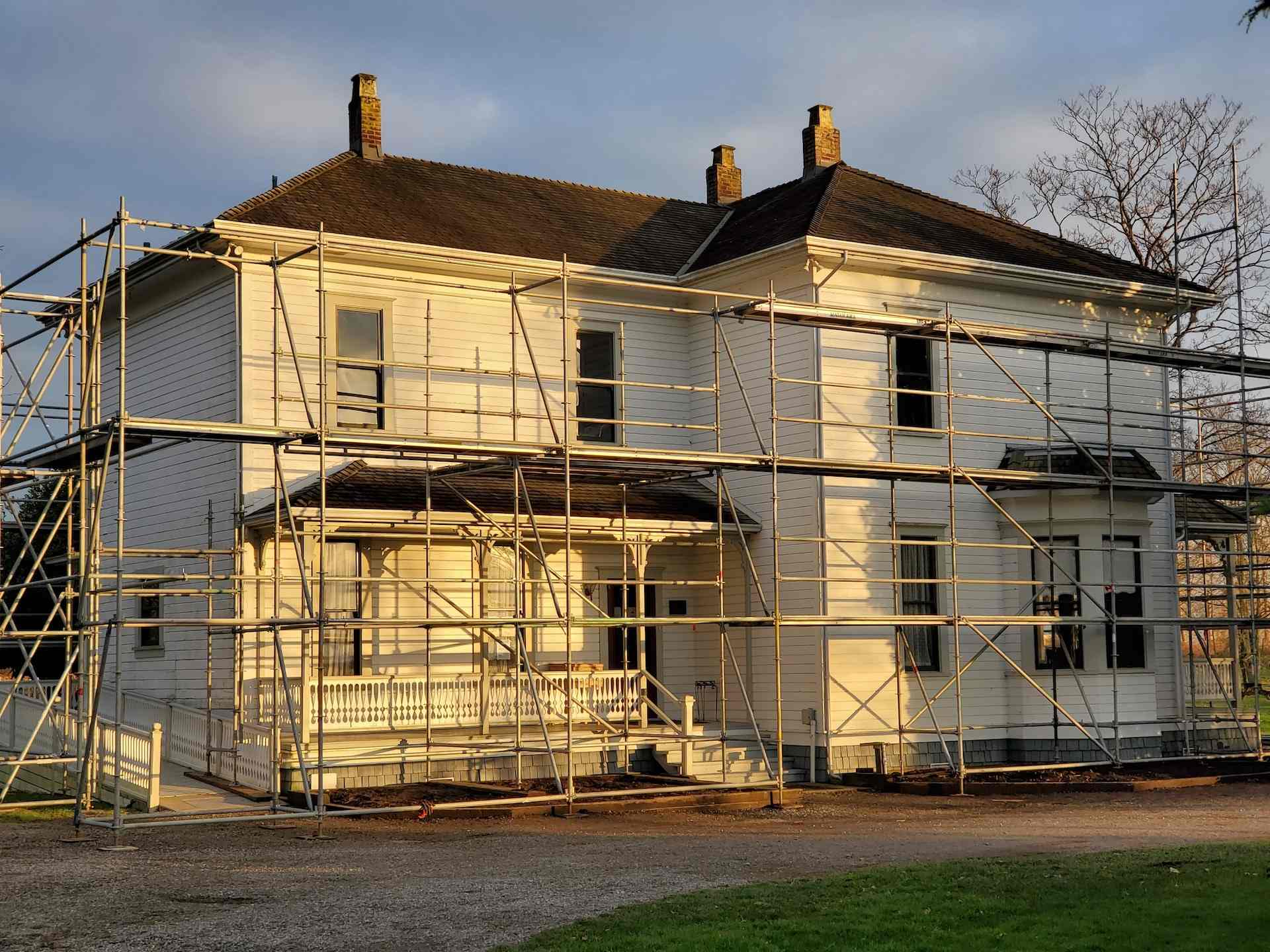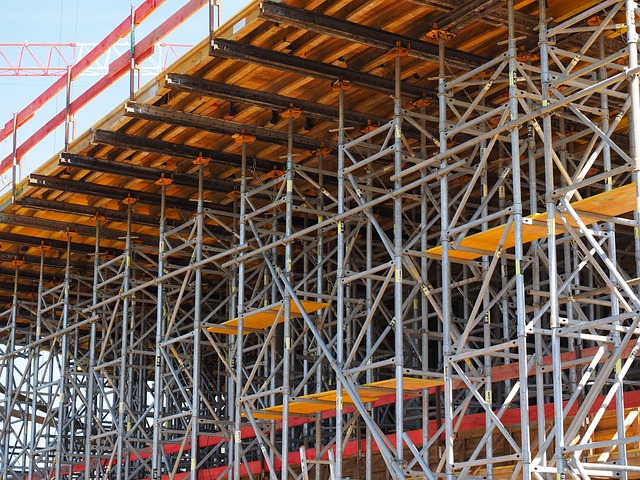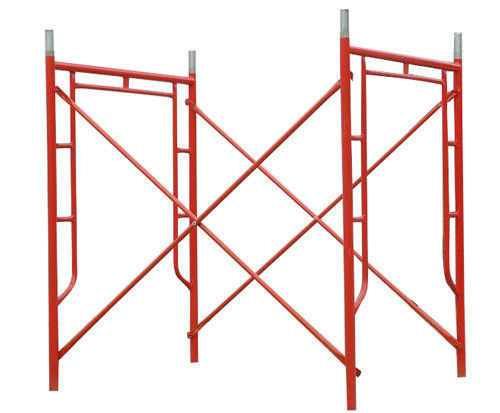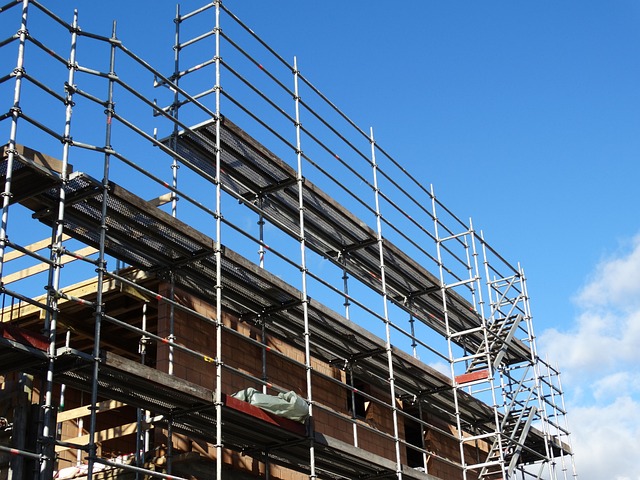
Scaffolding Meaning in Construction
1 year ago ,
Pappu Trade Concern
Construction is an industry that is a vital pillar for the development of modern society. They shape the physical infrastructure that the nation relies upon. It encompasses the building of major buildings, bridges, and roadways. And in this process, scaffolding plays a vital part, especially in the context of Nepal. It increases the safety of the workers and provides better accessibility to otherwise unreachable areas. Not only that, but having proper scaffolding also increases the productivity of the overall construction workers in Nepal.
Is that being said, What even is a scaffolding? And why is it important in the construction industry? Here we will look at the definition, types, importance, and benefits of scaffolding in Nepal.
So without any further ado, let's get started!
What is Scaffolding?

A scaffolding/ Props Teka , or मचान in Nepali, is a temporary structure typically made from metal tubes, wooden planks, metal joints, and other components. They are erected around a building or a structure during construction, renovation, or maintenance activities. As such, it is used to provide a stable working platform for workers at height.
It is also used to transport materials to high areas as well as such. A scaffolding is carefully designed, assembled, and inspected to ensure workers' safety. As such, it is undoubtedly one of the most important aspects of construction.
Now there are different types of scaffolding, each with its importance. So let's cover it a bit before we talk about the different types of scaffolding.
What are the different types of scaffolding?
There are different types of scaffolding used in the construction industry. While the primary function of scaffolding is to provide a stable platform for the workers to work on, the specifics will vary. Some of the most common types of scaffolding are as follows.
Tube and Coupler Scaffolding
This type of scaffolding uses steel tubes and couplers to create a framework. The tubes are connected with couplers from vertical support to form vertical frames. Tube and Coupler scaffolding are one of the most common types of scaffolding.
System Scaffolding
This type of scaffolding uses pre-made lock accessories that connect to a compatible system. This consists of vertical standards, horizontal ledgers, diagonal braces, and base plates. System scaffoldings are easy to assemble and disassemble.
H-frame scaffolding

As the name suggests, H-frame scaffolding features vertical frames connected by cross braces in the shape of H. This scaffolding is easy to install, simple, and stable.
Suspended Scaffolding
These scaffoldings are suspended from overhead support. They are used when construction workers need to work at heights. This scaffolding can be raised or lowered to the desired working height.
Mobile scaffolding
Mobile scaffolding, also known as rolling scaffolding or tower scaffolding, is designed to be easily movable. This type of scaffolding has wheels or casters, allowing for easy movement and transformation.
These are just some of the basic types of scaffolding. Each of these types of scaffolding has its own unique perks and applications. Now that we have covered the basics of what scaffolding is and its type, let's look at its importance.
What is the importance of scaffolding?
As you may have guessed from the definition, scaffolding is an extremely important part of a construction project. It is the platform where workers find stable and comfortable footing when working at heights. Besides this, well-designed scaffolding enables the workers to move around heights with more freedom and support the weight of the equipment.
But what is the key importance of scaffolding?
1) Minimizing risk
One of the key importance of scaffolding is its ability to provide safety to the workers. Working at heights always carries some element of risk and danger. But scaffolding provides a safe platform for the workers to work in. Given that you can add guard rails and safety nets along with the platform in the scaffolding, the risk of falling from heights is minimized to the extreme.
2) Efficiency and accessibility
Scaffolding allows easy access to different levels of construction sites. It provides practical solutions for workers to reach heights that would otherwise be challenging or unsafe to access. By providing the workers with a stable platform and easy access to different levels of the construction site, scaffolding inadvertently enhances the efficiency of the workers, enabling a smooth construction project.
3) Offers easy assembly and dismantling
Unlike what many people think, scaffolding is rather easy to install and dismantle. A trained operator can efficiently install and/ or dismantle scaffolding within a matter of hours. They are built using the joints connected with bolts and nuts. Therefore if one is experienced and knows what to do, the assembly and dismantling process is not that hard. This simple assembly and disassembly process saves time. For construction workers constantly battling against deadlines, it is one of the best importance of scaffolding.
4) Structural support and inspection
This is an often underlooked importance of scaffolding. The scaffolding enables the engineers, architects and safety personnel to inspect and access the structure. Since they provide a stable platform, safety inspectors and engineers can take their time for a deep inspection. Because of this, scaffolding plays an important role in deep safety inspection of the construction.
5) Compliance with safety standards
Did you know that scaffolding plays an important role in meeting construction safety standards? It plays a crucial role in ensuring compliance with safety regulations and standards. It also provides a framework for implementing necessary safety measures such as toe boards and fall protection systems. By doing this, it helps construction companies to avoid legal issues.
These are just some of the importance of scaffolding in the construction industry. Naturally, there is much more importance.
What are the benefits of scaffolding?

There are many benefits of scaffolding. But besides the benefits here are some more perks/ benefits that you can get from scaffoldings.
1) Flexibility and Adaptable
One of the benefits of scaffolding is that scaffolding systems are highly customizable. They can be made tailor-made to fit the needs of construction sites. This ensures that the construction projects can progress smoothly.
2) Professional Image
When used properly, scaffolding can enhance the public image of the construction project. A well-made scaffolding can be used to showcase the commitment to the quality and safety of a construction project.
3) Facilitates material handling
Scaffolding offers a practical solution to the storage and movement of construction materials. They are platforms, after all, and they can support more than just construction personnel. Construction personnel can store the material on the platform when the day ends to continue the next day.
4) Training and Skill Development
Working on construction projects often requires specific skills and training. Scaffolding allows construction workers to learn and grow while on the project. This benefit of scaffolding can be credited to the safety that the scaffolding provides.
5) Temporary structure for Special events
Scaffolding can also be used as a versatile framework for decorative installations for special events. They act as a skeleton structure for these small structures. A well-made scaffolding can be used as a skeleton for a temporary structure for a long duration.
These are some of the benefits that you can get with the scaffoldings. Naturally, we can find many more benefits if we dive deep enough. However, this covers the core perks of scaffolding.
Conclusion
Scaffolding or मचान are temporary structures used to provide a stable and versatile platform to work on. They have many types and are important components in construction projects. Naturally, they have their own set of perks and benefits as well.
Here we talked about the definition, types, importance and benefits of scaffolding. We hope you found this helpful. If you want to know more about scaffolding and other construction accessories, do follow our other blogs. And as always, thank you for reading till the end.
FAQ on Scaffolding in Nepal
Q: What is the Nepali word for scaffolding?
A: Scaffolding is called Machaan or मचान in Nepali.
Q: Why is scaffolding important in construction?
A: Scaffolding is important in construction because:
-
They provide a safe platform to work on
-
They help the construction project meet legal standards
-
They offer accessibility
-
They make construction more proficient.









